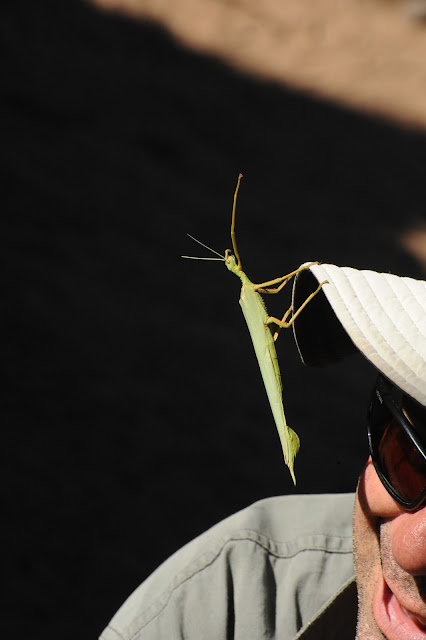Young pigeons
 |
| A first year Common Bronzewing Phaps chalcoptera |
On the weekend I was out mist-netting birds at Charcoal Tank Nature Reserve, NSW, helping Mark Clayton with a long term cooperative bird banding study. As it is now late summer almost autumn, the birds there have all finished breeding and the birds caught were a mix of adult and birds of the year. I am in the process of putting together an online guide to aging and sexing woodland birds of South-east Australia, based on photographs taken of birds in the hand, prior to release after banding them. And this trip provided a chance to photograph young pigeons as we caught examples of Common Bronzewing and Peaceful Dove.
The young bronzewing, which would have hatched last spring, differs from the adult in still having a soft bill, especially the cere above the nostrils. This is a residual feature of squabs, young pigeons,which have large wide and soft bills. An adult bronzewing has a hard bill and the cere is less spongy. This young bird was probably a male as there are some chestnut coloured feathers growing into the sides of the crown - adult females do not have such well coloured heads. The adult male also has a bright pale forehead and there seems to be signs of such growing into the young birds head.
 |
| An adult male Common Bronzewing |
 |
| A first year Peaceful Dove Geopelia placida |
The young Peaceful Dove was instantly recognisable by its generally dull plumage compared with that of an adult, which cannot be sexed on plumage. The adult bird has a smart blue-grey forehead, chin and cheeks, and boldly marked black and white bars on its breast. The young bird has a white/buff speckled head, and the barring is of brown, buff-tipped feathers.Also, the young bird has only a faint blue ring of bare skin around its eye, while that of the adult is bright, together with the prominent blue cere and irides. Again, the young bird has a soft bill, especially the cere, and the adult has a a hard, worn and flaky appearance, through wear and tear after years of foraging.
 |
| An adult Peaceful Dove |


















































